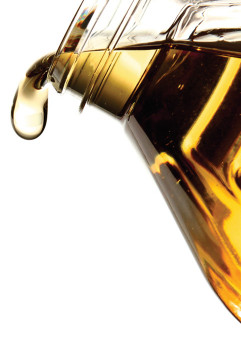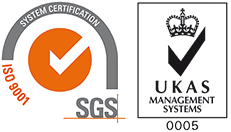The Problem with Palm Oil
It’s fast becoming the food world’s most controversial ingredient, but just how damaging is our over-reliance on palm oil – and what can be done to wean us off it? Flashes investigates…
If you own a Facebook account, there’s little chance you’ll have made it into 2019 without seeing Rang-Tan, the controversial Christmas advert from UK-based supermarket Iceland, which made use of a cartoon produced by environmental charity Greenpeace. Indeed, after being banned due to Britain’s regula-tions on political advertising back in November, the promo went viral, racking up more than 30 million views globally on social media within just a week of its release. The subject of this headline-grabbing short film? Palm oil, and its environmental impact.
An edible vegetable oil that comes from the fruit of oil palm trees, palm oil is one of the modern food industry’s most prolifically used ingredients and, in recent years, has gained a reputation as one of the world’s most environmentally damaging crops.
While traditionally oil palm trees were native to Africa, around 100 years ago the trees were taken to South-East Asia, where they were originally viewed as a purely ornamental crop. However, as demand for their oil began to increase, more and more oil palms were planted across the region until now, of the 44 countries producing palm oil globally, it is Indonesia and Malaysia that make up over 85% of the world’s supply. And it is here that the impact of our growing reliance on palm oil is being most keenly felt.
THE PROLIFERATION OF PALM OIL
Palm oil is used in nearly everything consumed in modern society on a daily basis, amounting to demand for a staggering 66 million tonnes globally each year. Charities including the World Wildlife Fund (WWF) and Greenpeace say the ingredient can be found in close to 50% of the packaged products stocked in supermarkets across the globe, from pizza and choc-olate to deodorant and lipstick, as well as in animal feed and a range of modern biofuels. And while palm oil is rarely used as a straightforward cooking oil out-side of South-East Asia, most shoppers likely use far more palm oil than they actually realise. Have you ever bought a Kit-Kat, Colgate toothpaste, Johnson’s baby lotion, Dove soap, Doritos, Kellogg’s Pop Tarts, Ritz crackers, M&Ms or Head & Shoulders shampoo? Then you’re a palm oil consumer.
It’s easy to see why palm oil has become so popular with food and cosmetics producers. An extremely versatile ingredient, palm oil is semi-solid at room temperature so can keep spreads spreadable. It is resistant to oxidation, so can give products a longer shelf-life, and unlike olive oil, it’s stable at high temperatures, meaning it can be used to give fried products a crispy texture. Palm oil is also odourless and colourless, meaning it doesn’t alter the look or smell of the food products it is used in – a serious benefit for major food companies.
Palm oil is also an incredibly efficient crop, meaning reducing our over-reliance on it is incredibly tricky. Palm oil plantations produce more oil per land area than any other equivalent vegetable oil crop, meeting 35% of the world’s vegetable oil demand on just 10% of the land. To get the same amount of alternative oils such as soybean or coconut, anything from four to ten times more land would be required, meaning the problems inherent in mass production of anything requiring forest space would simply shift to a different part of the world. Furthermore, palm oil is an important crop for the GDP of emerging economies, including Indonesia and Malaysia, and millions of smallhold farmers depend on palm oil for their livelihood.
CONTROVERSIAL CROP
So why the controversy? To produce palm oil, fruit is collected from palm oil trees, which live an average of 28 – 30 years. The problem being that at a young age, the trees grow too high for the fruit to be easily reached, leading producers to cut down the plants in order to make room for new trees. Meanwhile, across Indonesia and Malaysia, where trade in palm oil is a huge income generator, existing rainforests and peatlands are being razed to the ground to create space for new palm oil tree plantations.
In Indonesia alone, an area of rainforest the size of a football pitch is torn down every 25 seconds, with palm oil driving the destruction. But not only are the country’s rainforests hotspots for biodiversity, vital for regulating the Earth’s climate, they are also home to more threatened and endangered species than in any other nation on Earth. The impact? Bornean orangutan numbers more than halved between 1999 and 2015 with the loss of around 150,000 individual animals. That amounts to a staggering 25 orangutan deaths every day. The endangered pygmy elephant and Sumatran rhino populations of the region have also been gravely impacted by deforestation, while the combination of forest loss with the conversion of carbon rich peat soils sees the palm oil industry emit millions of tonnes of greenhouse gases into the atmosphere each year, greatly contributing to climate change.
Charities active in the sector say exploitation of workers and child labour are also rife, leading to calls for a major overhaul of the way the industry operates.
Nonetheless, the WWF warns that even the most committed environmentalist should think twice before attempting to boycott palm oil altogether, given the number of livelihoods dependant on its production. Instead, the charity recommends that consumers switch to products containing only certified palm oil.
THE MOVE TOWARDS CERTIFICATION
The key message, say environmental charities, is that palm oil can be produced more sustainably, and standards across the industry could be vastly improved if consumer demand was sufficient to force change.
Since 2004, the Roundtable of Sustainable Palm Oil (RSPO) has operated to increase production standards and set best practice guidelines for both palm oil producers and industry buyers. RSPOcertified palm oil is produced using methods that protect both the environment and the local communities who depend on its production for their livelihoods, ensuring that palm oil can continue to play a key role in food security. Today, the body is backed by almost every level of the food and farming industry, as well as by a host of environmental charities, who play an active role in helping to shape RSPO standards and guidelines.
Nonetheless, Greenpeace says consumers have a role to play too. The charity is trying to force brands including Nestlé, Unilever and Mars to put pressure on their suppliers to clean up production methods and work towards full RSPO certification.
So, as consumers, what can we do to reduce our use of a product used so prolifically? According to campaigners, simply shopping more responsibly and carefully can have a huge impact. By switching to products that contain only 100% RSPO-certified oil, and eschewing alternatives that do not, consumers have a key role to play in cleaning up the palm oil industry. It’s time to start reading those labels…
THE PALM OIL SUPPLY CHAIN
FRUIT IS PICKED EVERY 10 - 12 DAYS AND SHIPPED WITHIN 24 HOURS
MILLS CAN PROCESS 18 TONNES OF PALM OIL PER HOUR
THE OIL IS TRANSPORTED TO REFINERIES WHERE IT'S REFINED AND SEPARATED
REFINERIES SHIP PALM OIL TO MANUFACTURERS WHERE IT'S INCORPORATED INTO PRODUCTS LIKE PIZZA DOUGH, ICE CREAM, SHAMPOO, MOISTURISER AND LAUNDRY DETERGENT
THERE ARE 100 GRAMS OF PALM OIL IN EVERY 250 GRAMS OF MARGARINE AND 15 GRAMS OF PALM OIL IN EVERY 250 GRAMS OF COOKIES
PALM OIL GOES BY MANY ALIASES ON INGREDIENT LABELS:
PALM KERNEL
PALM KERNEL OIL
PALM FRUIT OIL
PALMATE
PALMITATE
PALMOLEIN
STEARATE
STEARIC ACID
ETHYL PALMITATE
FINDING SUSTAINABLE PALM OIL
CHECK THE ROUNDTABLE ON SUSTAINABLE PALM OIL (RSPO) DATABASE
LOOK FOR THE RSPO LABEL ON PRODUCTS
TELL RETAILERS YOU WANT TO BUY PRODUCTS THAT USE SUSTAINABLE PALM OIL








